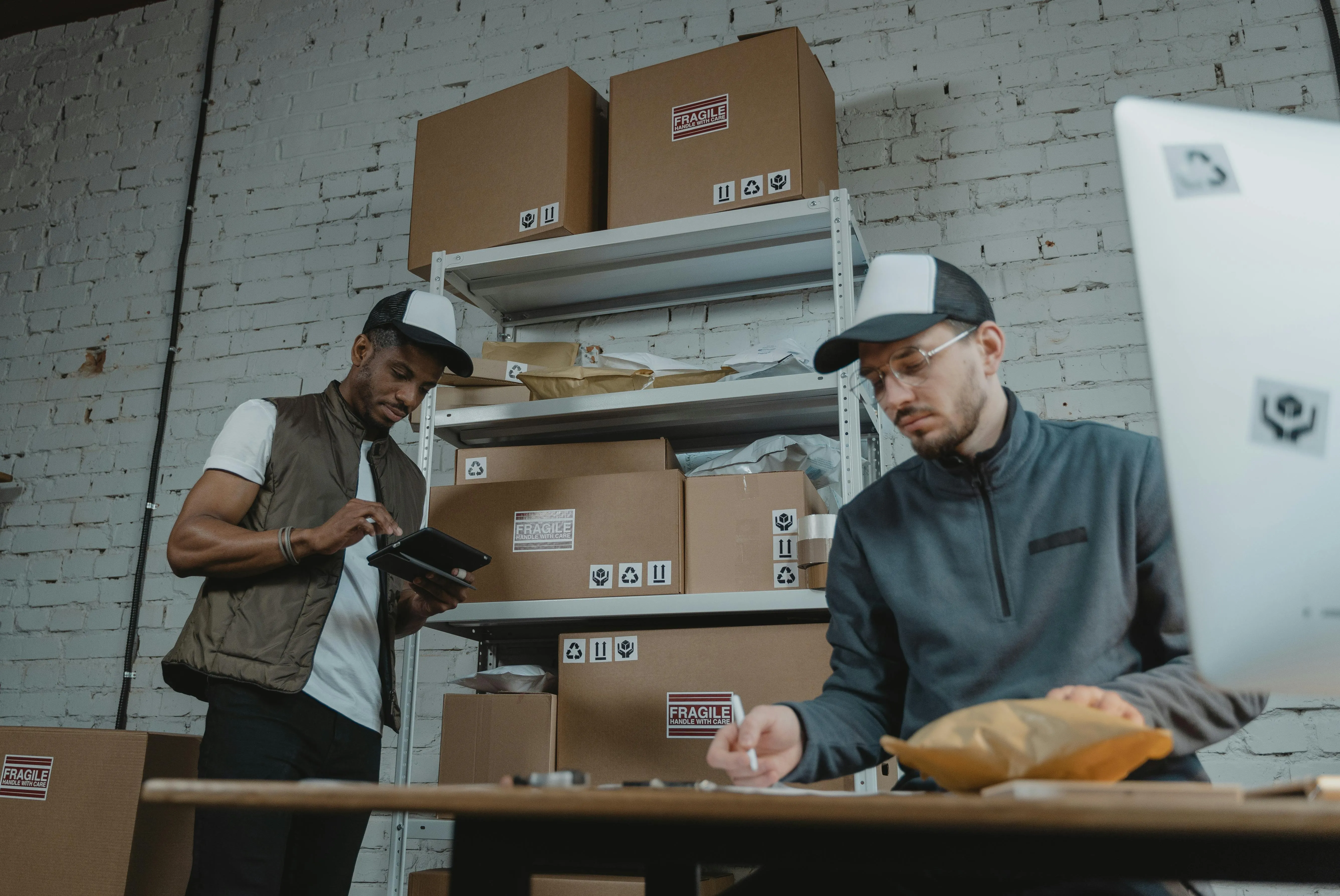Key Features Every Retail Team Needs for a Digital Workplace


Retail is an industry that thrives on fast, seamless communication. But for deskless employees—those on the sales floor, in warehouses, or even behind delivery trucks—staying informed can often feel out of reach. Traditional tools and methods fall short when it comes to reaching these teams. The result? Disconnection, low engagement, and struggles to share time-sensitive information.
The good news? You can tackle these challenges head-on with a carefully designed digital workplace. By identifying pain points and leveraging tools like intranets, mobile-first solutions, and engagement features, retailers can unify their teams, boost productivity, and deliver exceptional customer experiences.
Below, we’ll explore communication challenges facing deskless employees and reveal solutions through essential digital workplace features—complete with actionable insights and real-world examples.
The Pain Points of Deskless Communication with Retail Employees
1. Lack of Connectivity
Deskless workers don’t operate in a traditional office setup. They’re managing shop floors, replenishing shelves, or navigating warehouses. Without easy access to company communication tools, staying connected to organizational updates or even colleagues becomes a challenge.
The impact? Teams feel isolated, operational alignment suffers, and important updates don’t reach those on the ground when they’re needed most.
2. Low Employee Engagement
A disengaged workforce can ripple through your operations. Frontline retail employees often feel like cogs in the wheel, disconnected from company goals or achievements. Without effective communication that fosters inclusion, they may lack motivation and enthusiasm, leading to higher turnover rates and reduced productivity.
3. Delayed and Poor Information Flow
Whether it’s a last-minute promotional change, updated policies, or inventory instructions, timely communication matters. Yet, many retail teams operate on outdated methods like bulletin boards, mass emails, or verbal updates—methods that are unreliable, prone to errors, and too slow for today’s fast-moving retail environment.
4. Resistance to Change
Even when IT departments introduce digital tools to solve communication issues, deskless employees are often reluctant to adopt new systems. Legacy habits, lack of training, and workloads contribute to resistance, making it hard for internal communications managers to implement meaningful changes.
Essential Features of a Digital Workplace for Retail
1. A Digital Entrance to Retail Operations
Retail employees need a centralized platform—the digital equivalent of a front door—that gives access to everything they need for their workday. From integrated tools to global search and store-wide documentation, this feature ensures all employees begin from the same starting line.
What it solves: It replaces fragmented systems and disjointed communication, allowing employees to seamlessly access schedules, procedures, and updates. This eliminates confusion and fosters operational alignment.
Real-world wins: Retailers who’ve adopted this feature report improved decision-making and operational transparency, especially across stores with multiple locations.
2. Mobile-Friendly Accessibility
Mobility is non-negotiable for retail teams. Deskless employees need communication and collaboration tools that work wherever they are—on the shop floor, warehouse, or in transit. A mobile-first digital workplace provides just that. With the LumApps + Beekeeper merger, the mobile access for frontline employees has never been better!
Must-have tools:
- Push notifications and real-time alerts for urgent updates, like promotions or policy shifts.
- Easy access to schedules, inventory updates, and communication hubs via smartphones or tablets.
What it delivers: Employees stay connected and informed without disrupting their workflow. Global retail chains have reported response rates improving by as much as 30% after implementing mobile-enabled intranets.

3. Employee Recognition to Build Engagement
Recognition programs—built into your digital workplace—go a long way in making employees feel valued. Peer-to-peer shoutouts, performance tracking, and achievement highlights create a workplace culture where employees feel seen and appreciated.
Why it’s game-changing: Recognition boosts morale, stabilizes retention rates, and encourages teamwork. For instance, a home improvement chain used recognition dashboards to celebrate top-performing employees, leading to higher engagement scores and team satisfaction.
4. Centralized Store Operations
Retail thrives on operational efficiency. This includes features like store profile pages, an employee directory, and shared communities for collaboration.
What it solves:
Instead of wasting time searching for contact details, documents, or promotional changes, employees have a one-stop shop for all their tools and information.
Real-world results: A leading apparel store saved an estimated 35% in time searching for resources by centralizing documentation and communication on their intranet platform.
5. Accelerate Onboarding and Training with Video Learning
In retail, speed and clarity are everything—especially when it comes to new sales promotions or essential training. Video learning breaks down the barriers of time and location, delivering quick, targeted updates straight to salespeople right where they’re making a difference: on the shop floor.
With solutions like LumApps Microlearning, training becomes accessible on any device. Bite-sized video content lets employees learn in minutes, without leaving customers waiting. This approach boosts engagement and makes knowledge stick—with dynamic visuals and interactive modules that help teams absorb and retain new information faster.
When every second counts, video learning puts the right update in everyone’s pocket. Whether it’s a new sales pitch, product detail, or compliance tip, your team can watch, learn, and act—creating a culture of confident, well-equipped salespeople ready for what’s next.
6. Enhanced Efficiency and Productivity Tools
The backbone of any retail operation is its ability to manage schedules, track progress, and ensure smooth supplier coordination.
Key functionalities:
- Dynamic team schedules across locations.
- Sales dashboards for real-time reporting of performance trends.
- Supplier connectivity to streamline restocking and reduce inventory errors.
Outcomes: A home decor brand reduced inventory wastage by 25% and saved hours in manual scheduling by integrating these tools into its digital workplace solution.
7. Customization for Brand Identity
No two retailers are alike, and your solution shouldn’t follow a one-size-fits-all approach. Each business has unique needs, processes, and goals, so it’s essential to choose a digital workplace that allows for complete customization. Look for a platform that lets you tailor interfaces, workflows, and branding. This ensures that not only does the system align with your operational needs, but it also reflects your company’s identity and values. Secure communication channels should seamlessly integrate with these tailored design elements, creating a platform that feels like a natural extension of your business.

The added value here is immense: a customizable solution prioritizes usability, making it more intuitive for employees to adopt and engage with. This ultimately boosts employee satisfaction by providing tools that feel personal, relevant, and specific to the retail industry. A well-designed, adaptable platform can empower your workforce, streamline processes, and help drive your business forward.
The Future of Retail Communication Starts Now
Every retail operation is unique—but the challenges faced by deskless employees are often universal. By leveraging a smart intranet system, internal communications and IT managers can revolutionize how their teams connect, share, and thrive. Whether it’s amplifying engagement, delivering faster updates, or creating a streamlined onboarding process, the tools exist to solve your workforce’s greatest communication challenges.
Now is the perfect time to consider optimizing or launching your intranet strategy. Investing in a cohesive communication platform isn’t just a step toward operational efficiency—it’s a commitment to your team’s success.
Take the leap, and lead the future of retail communication. Explore how the right intranet can transform your deskless workforce into a united, high-performing team today!



